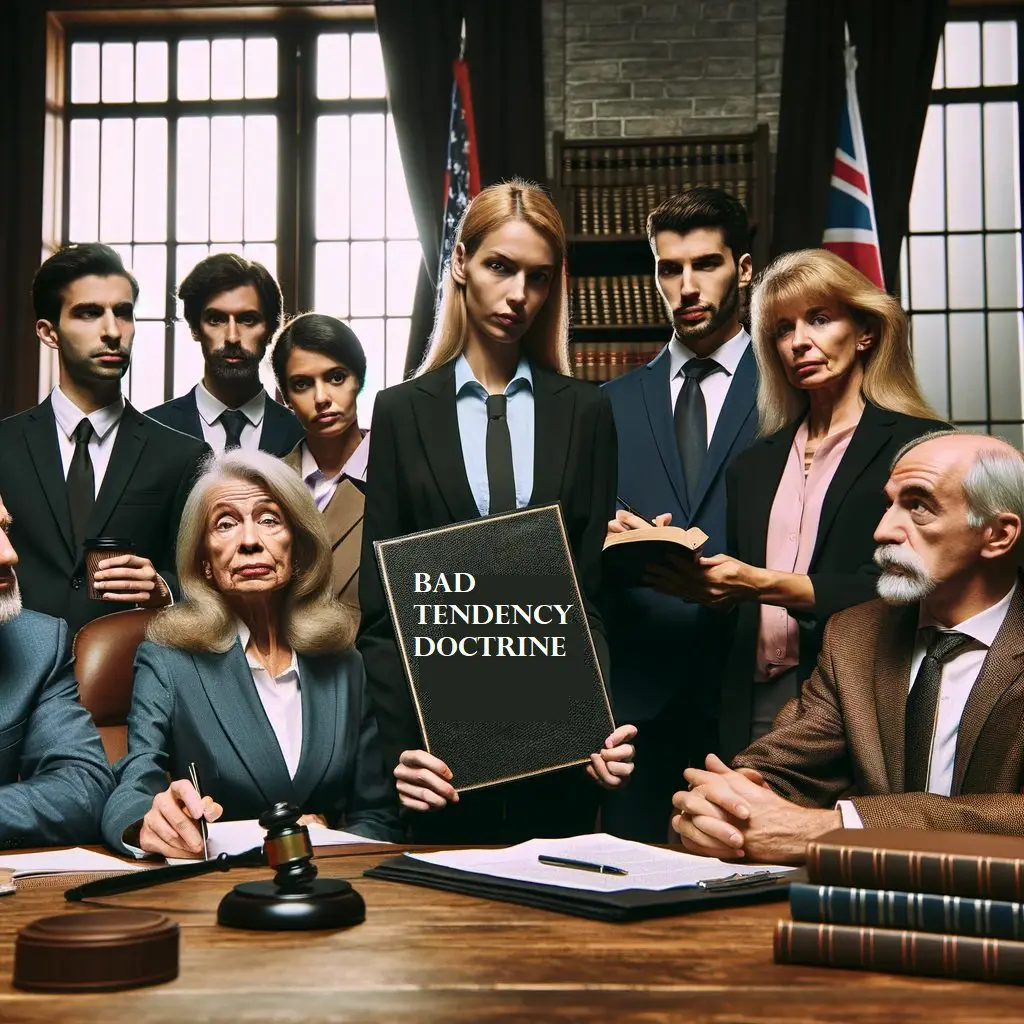The concept of free speech has always been a cornerstone of democratic societies, particularly in the United States. However, the journey to our current understanding of free speech rights has been complex and multifaceted, significantly influenced by legal doctrines like the Bad Tendency Doctrine. This principle, which emerged from English common law, played a pivotal role in shaping First Amendment interpretations, especially during the early 20th century.
The Genesis of the Bad Tendency Doctrine
Originating from English common law, the Bad Tendency Doctrine posited that speech could be restricted if it had the potential to lead to illegal actions or was deemed harmful to public welfare. This doctrine was a fundamental aspect of U.S. legal history, particularly in how the courts interpreted the First Amendment. Notably, the doctrine was applied in several landmark cases, such as Abrams v. United States and Gitlow v. New York, where the courts upheld restrictions on speech based on its potential consequences.
The Doctrine’s Influence on Early 20th Century Free Speech Cases
During World War I and the subsequent years, the U.S. government faced significant criticism and dissent, which it often sought to suppress. The Bad Tendency Doctrine became a tool for this suppression, as it allowed the government to criminalize speech that was seen as having a deleterious effect on public order or national security. The doctrine was particularly influential in cases involving criticism of the government’s war efforts and was seen as a means to maintain national unity and security.
Transition to Modern Free Speech Standards
As legal thought evolved, the Bad Tendency Doctrine began to be viewed as overly broad and incompatible with the principles of a free society. This led to the development of more nuanced tests, such as the “clear and present danger” test, which offered a more refined approach to assessing the permissibility of speech. The shift away from the Bad Tendency Doctrine marked a significant evolution in free speech jurisprudence, emphasizing the importance of balancing government interests with individual liberties.
Contemporary Relevance and Critiques
Today, the Bad Tendency Doctrine is largely seen as an outdated legal principle, replaced by standards that better align with contemporary views on free speech and civil liberties. Critics of the doctrine argue that it was too expansive in its suppression of speech and failed to adequately protect individual rights. Its historical application, however, provides crucial insights into the evolution of free speech laws and the ongoing struggle to define the boundaries of permissible speech.
Exploring Legal Cases and Societal Impact of the Bad Tendency Doctrine
The application of the Bad Tendency Doctrine in landmark legal cases like Abrams v. United States and Gitlow v. New York provides a window into the societal and legal tensions of early 20th-century America. In Abrams v. United States, the Supreme Court upheld the conviction of individuals distributing leaflets that criticized U.S. intervention in the Russian Civil War. This case highlighted the government’s staunch approach to suppressing dissent during wartime, illustrating the wide-reaching implications of the doctrine in curtailing free speech.
Similarly, in Gitlow v. New York, the doctrine was used to uphold a conviction under a state anarchy law, demonstrating its influence beyond federal cases. These instances underscored the prevailing belief that governmental stability and national security could justify restrictions on speech.
The Doctrine’s Waning Influence and Replacement
As legal thought progressed, the Bad Tendency Doctrine’s broad application began to raise concerns. The emergence of the “clear and present danger” test in cases like Schenck v. United States marked a pivotal shift towards a more balanced approach to free speech. This test required a more direct and immediate connection between speech and its potential harm, thus providing greater protection for free speech.
The eventual replacement of the Bad Tendency Doctrine with more nuanced standards was not just a legal evolution but also reflected broader societal changes. The increased emphasis on individual liberties and civil rights, particularly during the civil rights movement, necessitated a reevaluation of how speech was regulated.
Comparative Analysis with Contemporary Legal Standards
Today, the Bad Tendency Doctrine is often contrasted with contemporary legal standards governing free speech. The current “imminent lawless action” test, established in Brandenburg v. Ohio, requires that speech must be directed to inciting imminent lawless action and likely to produce such action. This standard reflects a more robust commitment to protecting free speech, acknowledging its essential role in a democratic society.
Reflection on the Doctrine’s Legacy and Lessons
The Bad Tendency Doctrine’s legacy in American legal history serves as a reminder of the delicate balance between maintaining public order and protecting individual freedoms. Its historical application during periods of national crisis offers valuable lessons for contemporary legal challenges, especially in an era where issues of free speech and national security are increasingly intertwined.
The evolution from the Bad Tendency Doctrine to current free speech standards also illustrates the dynamic nature of legal interpretation, shaped by changing societal values and political contexts. As we continue to confront new challenges to free speech, the lessons drawn from the doctrine’s history remain highly relevant.
Conclusion
In retrospect, the Bad Tendency Doctrine represents a significant chapter in the history of American free speech law. From its roots in English common law to its eventual decline in favor of more nuanced legal tests, the doctrine’s journey mirrors the evolution of societal values and legal thought. Its study offers critical insights into the ongoing quest to define the limits of free speech in a constantly changing world.
Disclosure: Generative AI Created Article
















